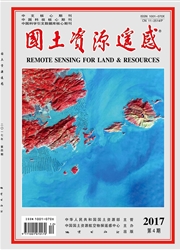

 中文摘要:
中文摘要:
掌握非震情况下的热红外亮温背景场及其时空变化规律是有效提取地震红外异常信息的关键。利用2003--2011年NOAA卫星夜间热红外遥感数据构建祁连山和首都圈亮温背景场,分析其时空演化特征。结果表明:红外亮温背景场受季节、地形和断裂活动等多种因素的影响,其中受季节变化影响最大,年变规律明显;不同地理环境,亮温年变特征呈现不同形式,对于地形地貌复杂的地区,亮温变化曲线不稳定,红外亮温与地面高程呈显著的负相关关系,地面高程每增加100m,亮温降低约0.21~0.63%,这与我国气温直减率基本一致;活动断裂带在红外图像上表现为明显的高亮温线性条带或亮温分界带;多年平均背景场平滑了气候等突变信息,呈现出稳定性较强的规律性变化特征,为断裂活动和地震所引起的增温异常检测提供了稳定的亮温变化基准场。
 英文摘要:
英文摘要:
Understanding the thermal infrared background field and its temporal-spatial evolution characteristics under the condition of no earthquake is the key to the effective extraction of infrared anomaly information related to earthquake.The brightness temperature background fields in the study areas of the Qilian Mountains and the Capital Zone were established using NOAA satellite thermal infrared remote sensing data from 2003 to 2011.At the same time,the temporal-spatial evolution characteristics of infrared brightness temperature background fields were analyzed.The results show that the background field of brightness temperature is influenced jointly by many factors,such as seasonal variation,terrain,and fault activity.Seasonal variation is the most important factor affecting infrared brightness temperature which has the obvious annual variation feature.In consideration of geographical environment difference,the characteristics of annual variation show different manners.The brightness temperature changes unstably in the region where topographical features are complicated.The relationship between the infrared brightness temperature and the elevation shows prominent negative correlation,and the brightness temperature is reduced by about 0.21 ~ 0.63℃ with the increase of 100 m in ground elevation,which is in accordance with the temperature lapse rate.The active fault belts obviously display linear belts or the boundary of the brightness temperature in the thermal infrared temperature images.Studies show the variation characteristics of the multi annual average background field which smoothes some climate change information such as atmosphere,and this field is regarded as a stable reference field of brightness temperature to detect the temperature-increase anomaly caused by fault activity and earthquake.
 同期刊论文项目
同期刊论文项目
 同项目期刊论文
同项目期刊论文
 期刊信息
期刊信息
